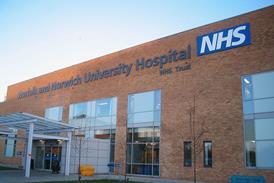Benefits are often the most challenging part of EPR business cases. David Corbett emphasises on identifying benefits that trusts need to consider while investing in and implementing digital improvements
In February 2022, Sajid Javid, former health and social care secretary announced that he wanted 90 per cent of NHS trusts to have an Electronic Patient Record in place by December 2023, and the remaining 10 per cent to be in the process of implementing them.
NHS England categorised trusts into four groupings - 19 in group zero (have no EPR and are developing a business case), 11 in group one (at procurement or implementation stage), 137 in group two (with an existing EPR which needs extending and optimising), and 45 in group three (have an existing EPR meeting the standard).
At Apira we were well placed to support many group zero trusts on their EPR journeys having already successfully supported many others to produce business cases, and helped them to run procurements for new EPRs.
The principle challenge for the trusts was to develop a robust HM Treasury “Green Book compliant” business case and procure an EPR using a timely, efficient process. Ensuring the case and overall programme is clinically led (and owned) with extensive engagement is also a major challenge.
To address these challenges we have developed an innovative and agile approach. Our engagement methodology incorporates a combination of direct and virtual discovery sessions with key stakeholders and a wider survey of trust staff to gain insight on existing challenges, gaps, and future needs.
Benefits are often the most challenging part of business cases, particularly where a trust is moving from an existing EPR or mix of existing systems.
Whilst there are some good examples of benefits, these often lack consistency. When identifying benefits trusts need to consider their starting point, local factors which influence benefits, and their alignment to strategic objectives.
Apira work with clinical and other teams across the trust to identify the cash releasing, non-cash releasing, quality, and societal benefits. Cash releasing benefits often focus on small percentage improvements in high volume activity/cost areas, for example reducing drug spend or length of stay. Over the lifetime of the contract these small percentage improvements can equate to sizeable cash releasing benefits.
Productivity improvements such as clinical time savings through teams no longer having to access and search on multiple systems, is typically one of the biggest non-cash releasing saving areas.
The quality and clinical safety benefits help to justify the clinical and wider strategic case, along with those that will support improvement to working lives of staff.
When identifying benefits trusts need to consider their starting point, local factors which influence benefits, and their alignment to strategic objectives
It’s important not to overstate benefits or expect them to magically appear at go live. Very few benefits demonstrate any return in the first 12 months post go live, with most being phased in gradually over the first few years.
The National Programme highlighted that not enough focus was placed on measuring and realising benefits. There is now an expectation for trusts to collate tangible and measurable evidence of benefits following an implementation. This means benefits requirements need to be built into the product specification, and trusts need to commit to realising the benefits, and have resourced benefits realisation and monitoring plans.
Phill James, Digital Clinical System Programme Director at East Cheshire NHS Trust and Mid Cheshire Hospitals NHS Foundation Trust believes benefits management must be done well, stating “It’s vital that benefits management is taken seriously and that there’s a structured approach that clearly defines the type, ownership and the method of calculation.
“Graphical representations of benefits realisation on a year by year basis within the business case is also useful in demonstrating any anticipated lag in benefits and a breakeven curve, as this helps trusts to plan its response to the initial revenue burdens.
“A step by step walk through with benefits owners is key – with some confident of improving their target and others reining back ambitions at the business case stage, but all must be willing to return to re-evaluate the benefits regularly as confidence rises and the outcomes move from theory to lived experience.”
From a clinician perspective, Dr Jim Ritchie, Consultant Renal Physician and CCIO at the Northern Care Alliance NHS Foundation Trust hopes that we will see a much richer evidence base develop over the next few years. “We could see evidence of benefits being delivered through use of vendor systems playing an increasing role in the procurement evaluation criteria, and whilst benefits are a shared responsibly between trusts and EPR vendors, we could see more commercial models which see payments to vendors directly linked to benefits realised by trusts”.
Only time will tell whether trusts realise all the benefits set out in their cases, and to the level predicted, but this isn’t just about the cost savings – it’s about how we invest in and use systems which help us to better look after the health and care of our population – improving, extending and saving lives, improving patient experience, and helping us to attract and retain our brilliant NHS workforce.




























